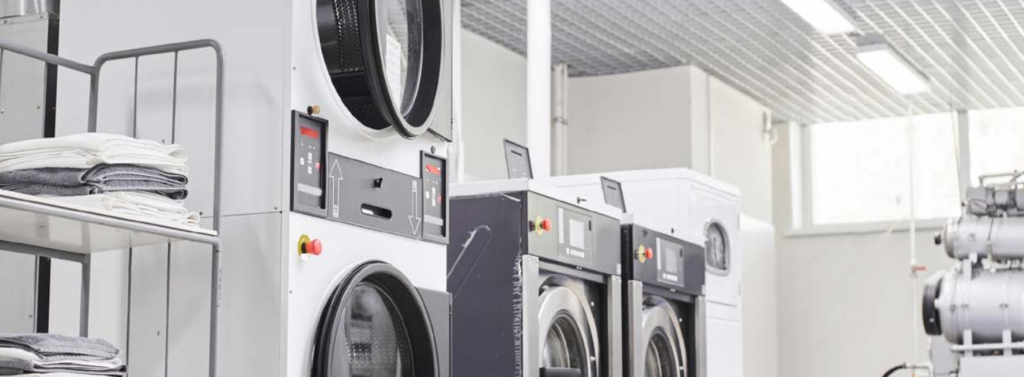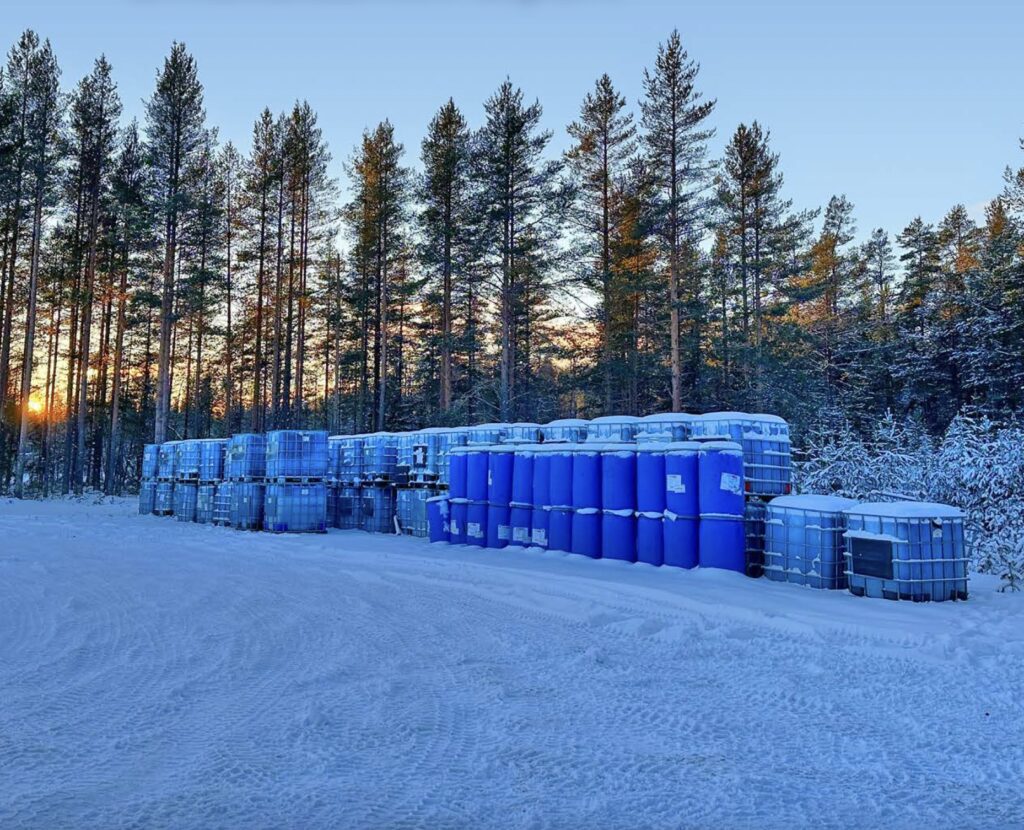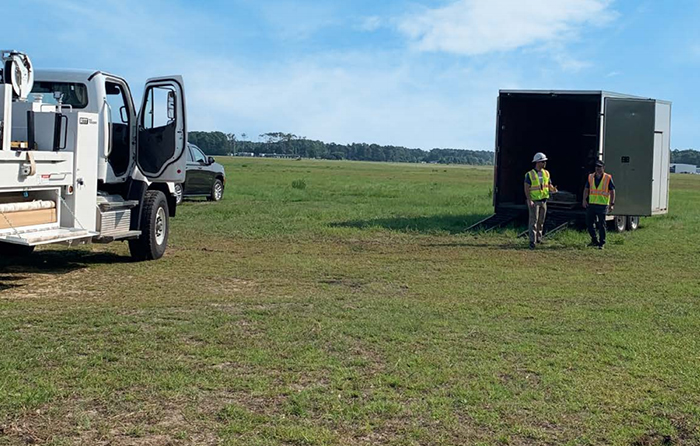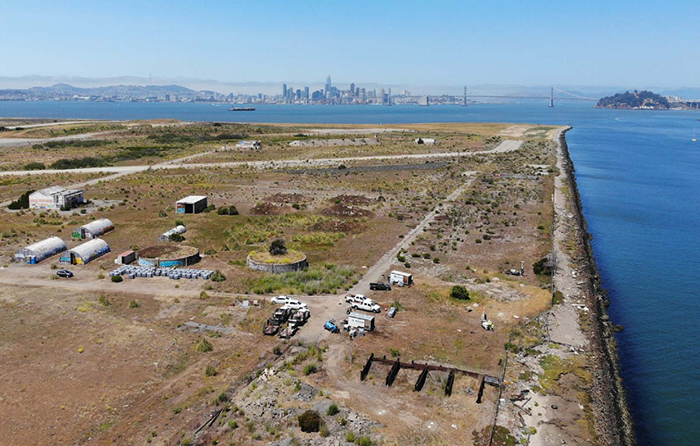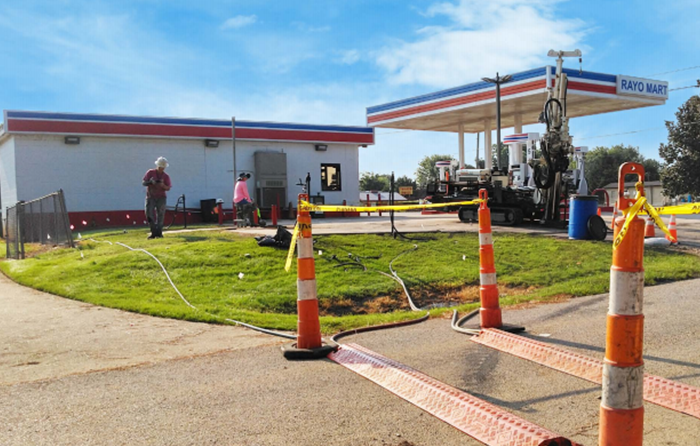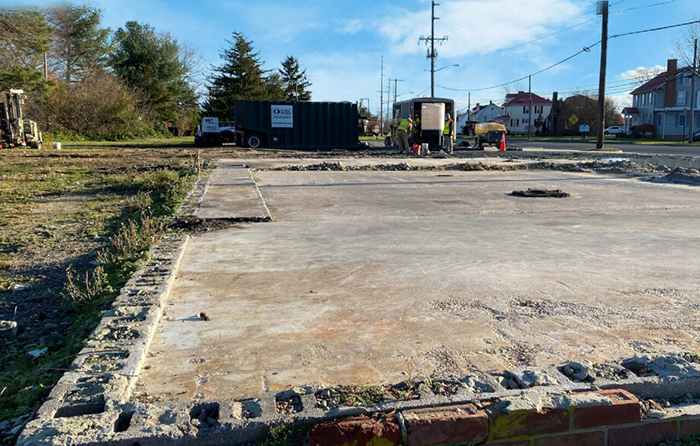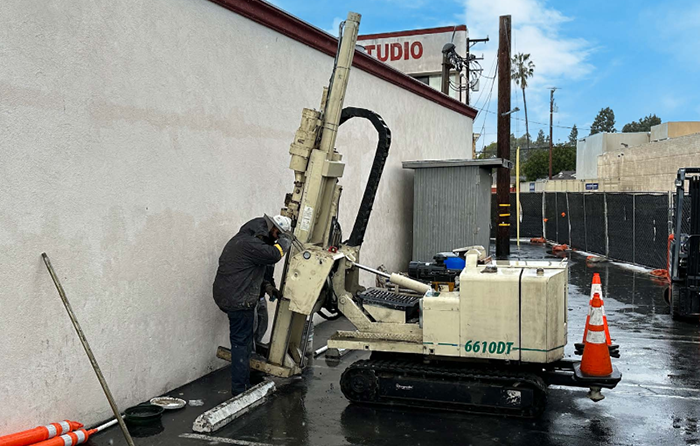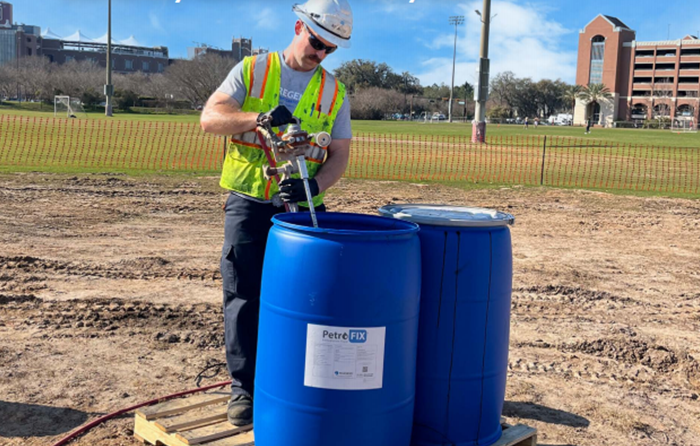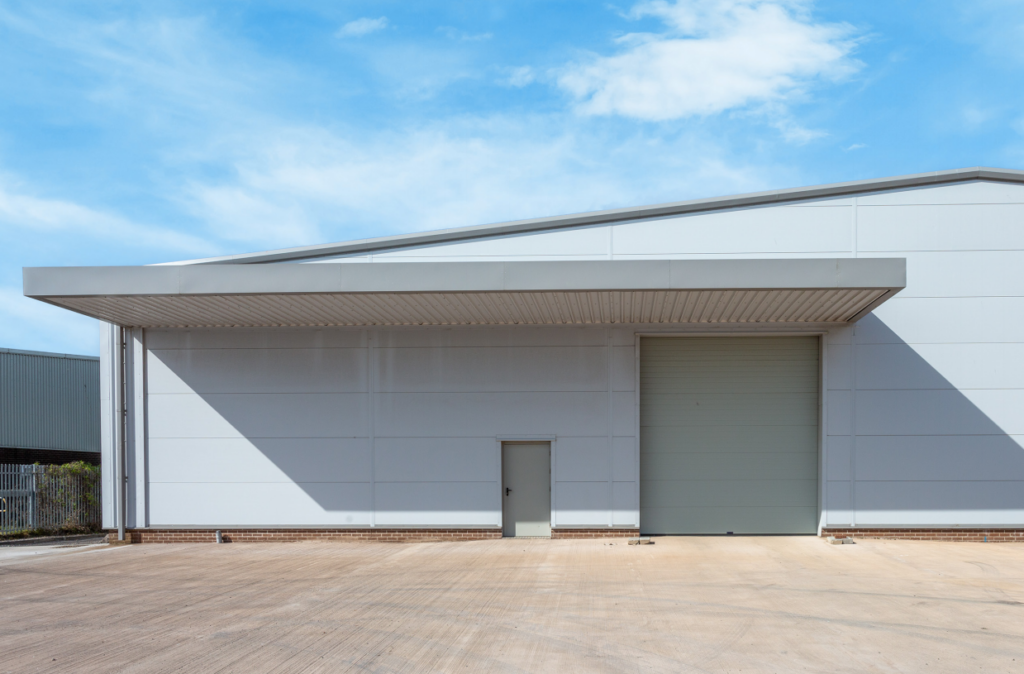Closure Moves Forward at Former Dry Cleaner Site
Download the Case Study
Case study highlights:
- Remediation achieved site cleanup objectives and site closure from IDEM requested
- Multi-faceted remedial approach implemented to address soil, groundwater and vapor intrusion
- 3-D Microemulsion outperformed EVO in pilot study, demonstrating enhanced capability in rapidly reducing PCE
A former drycleaners site in Central Indiana employed a comprehensive remediation strategy to address on and offsite soil and groundwater contamination caused by chlorinated solvents, primarily perchloroethylene (PCE) and its byproducts. Using an enhanced reductive dichlorination (ERD) approach, the team strategically applied 3-D Microemulsion®, Bio-Dechlor INOCULUM® Plus (BDI), and a soluble ferrous iron substrate to the groundwater plume to facilitate enhanced reductive dechlorination of these contaminants, transforming them into harmless byproducts. This proven treatment substantially reduced the groundwater plume, leaving only lowlevel residual contamination that is effectively managed through institutional controls. Following these results, a site closure request under the state’s Voluntary Remediation Program (VRP) is currently under review by the Indiana Department of Environmental Management (IDEM).
Implementing a PlumeStop Barrier for PFAS Plume Control at Airport in Sweden
Download the Case Study
Case study highlights:
- Successful installation of a 230 ft PlumeStop® barrier to prevent further migration of PFAS, as part of Swedish government-funded study.
- PFAS concentrations reduced by 97% to 99% downgradient of the barrier.
- This collaborative project, delivered by Granitor Miljöteknik (supported by Geokompaniet and REGENESIS), demonstrates how offsite receptors can be protected using a zero-waste, naturally powered approach.
PetroFix Achieves UST Site Closure at NAAS Edenton
Download the Case Study
Case study highlights:
- NCDEQ issued a No Further Action Status for the site
- Application of PetroFix effectively mitigated benzene and other petroleum hydrocarbons to below regulatory thresholds
- Project exemplifies the successful adaptation of PetroFix in a complex post-military context
At the Naval Auxiliary Air Station Edenton, extensive historical use and subsequent contamination from military fuel operations necessitated robust remedial actions. After decades of conventional treatments and a monitored natural attenuation (MNA) approach, the application of PetroFix® supplemented with electron acceptors significantly enhanced MNA, effectively mitigating benzene and other petroleum hydrocarbons to below regulatory thresholds, culminating in a No Further Action status for the site. The strategic application of PetroFix, along with ongoing monitoring and adjustments, highlights the effectiveness of innovative remediation technologies in overcoming significant environmental challenges.
PFAS Effectively Remediated at Former Naval Air Station Alameda
Download the Case Study
Case study highlights:
- Within one year of implementation, >99% PFAS reductions achieved within treatment zone
- Results indicate a near-complete halt of PFAS migration into the estuary
- Site establishes a precedent for easy-to-implement, low-cost, and zero-waste PFAS remediation at military sites
Historical firefighting activities at the former Naval Air Station (NAS) Alameda resulted in high PFAS (per- and polyfluoroalkyl substances) concentrations in the groundwater, threatening the Oakland Inner Harbor. In response, the project team, comprising Bayside Engineering, Construction, Inc. (Bayside), APTIM Federal Services (APTIM), and REGENESIS®, collaboratively implemented a 720-foot in situ permeable reactive barrier (PRB) using PlumeStop® colloidal activated carbon (CAC) technology. This innovative approach created an adsorptive barrier within the polluted aquifer, effectively capturing PFAS and preventing their migration. After one year, the target PFAS compounds were reduced by more than 99% in the treatment zone with significant decreases in the downgradient wells.
UST Site Closure Achieved Following Colloidal Carbon and Bioremediation Treatment
Download the Case Study
Case study highlights:
- Site cleanup objectives achieved, offsite drinking water protected
- The use of PetroFix enabled the site to earn a No Further Action Status
- PetroFix achieves over 97% Benzene reduction in weathered bedrock
A petroleum odor discovered in a residential production well led to the identification of an underground storage tank (UST) release at an upgradient active gas station. The contamination plume, containing high levels of total petroleum hydrocarbons (TPH), specifically benzene, threatened eight nearby residential drinking wells. Given the urgent need for remediation, PetroFix® was chosen over other methods, including ozone, due to its rapid and effective treatment capabilities. This first-ever PetroFix application in Alabama was highly successful, achieving the site cleanup objectives to demonstrate offsite drinking water protection and earning the site a No Further Action Status.
PetroFix Achieves Success at Delaware Service Station
Download the Case Study
Case study highlights:
- Site closure targets rapidly met through innovative remediation
- Strategic application of PetroFix® through both grid and barrier injections as well as the direct application of RegenOx® during excavation of highly impacted soils
- Achieved reductions in benzene, toluene, and EDB to near or below detection limits
PetroFix successfully remediated petroleum hydrocarbon contamination, first discovered in the 1980s, at a vacant, former retail service station in Delaware. The strategic application of PetroFix® through both grid and barrier injections as well as the direct application of RegenOx® during excavation of highly impacted soils, significantly reduced high concentrations of benzene and toluene, along with low levels of ethylene dibromide. These interventions brought contaminant levels below the final regulatory cleanup threshold needed to achieve site closure. By implementing PetroFix, the Delaware project achieved reductions in benzene, toluene, and EDB to near or below detection limits, securing an effective, long-term solution for groundwater remediation.
Rapid Elimination of Chlorinated Solvents
Download the Case Study
Case study highlights:
- The site achieved a greater than 99% reduction in CVOC concentrations
- 90% CVOC concentration reduction goal was achieved within four months post-application
- Ongoing monitoring indicates the continued effectiveness of the treatment, with additional reductions expected in the following months
In Southern California, a retail facility with an active food service tenant faced significant groundwater contamination from chlorinated solvents, primarily tetrachloroethylene (PCE) and trichloroethylene (TCE), resulting from a historical release at a former dry cleaners on-site, which also impacted adjacent properties. Despite previous remediation efforts, high contaminant concentrations persisted, feeding a contaminant plume. Using 3-D Microemulsion® (3DME), Sulfidated Micro-Scale Zero Valent Iron® (S-MZVI), and Bio Dechlor Inoculum Plus® (BDI Plus), the site achieved a greater than 99% reduction in CVOC concentrations and halted plume migration through biologically enhanced reductive dechlorination (ERD) and in situ chemical reduction (ISCR), meeting the site’s performance goals.
High-Mass Petroleum Hydrocarbons Treated to Achieve Closure
Download the Case Study
Case study highlights:
- Injected PersulfOx during three treatment rounds sequenced approximately two months apart
- Toluene reduced by an average of 94% and below the toluene SSTL in all five performance monitoring wells
- Toluene remains below its SSTL following the injection of PersulfOx
A former electric service company upstate of South Carolina reported a release during a UST removal completed at the site in 1988. Aggressive fluid vapor recovery (AFVR) events were completed from 2004 to 2008 and from 2019 to 2020 to address the release, along with groundwater monitoring. Despite these efforts, high concentrations of petroleum hydrocarbons (PHC) remained. Following years of remediation, the final selection and successful application of PersulfOx® effectively reduced high concentrations of toluene in groundwater below the site cleanup goal at an electrical service company upstate of South Carolina. The remediation achieved the site target cleanup objectives and received regulatory closure for the decades-old release incident.
Stringent Site Closure Goals Achieved Using PetroFix
Download the Case Study
Case study highlights:
- Petroleum impacts effectively remediated at university recreation facility site
- Project goals met in the treated areas within budget and time constraints
- Low-impact, single injection event minimized disturbance to athletic fields
Terracon, a leading environmental engineering and consulting firm, completed the remediation of a university recreational facility in Florida impacted by historic petroleum hydrocarbon (PHC) contamination. Under stringent contractual timelines and performance benchmarks set by the Florida Department of Environmental Protection (FDEP), Terracon excavated PHC-impacted soils and applied PetroFix® in situ to address residual contamination in the saturated zone. The injection area needed to be restored to its original condition to accommodate upcoming seasonal use. A reliable injection technology was required to achieve the project goals, minimize disruption to the athletic fields, and avoid the need for remobilization. This comprehensive approach successfully met FDEP’s cleanup goals for soil and groundwater where the amendment was applied in the treatment area.
SourceStop Reduces PFAS by >99% at Belgian Factory Site
Download the Case Study
Case study highlights:
- >99% decrease in groundwater PFAS concentrations
- SourceStop has established a new equilibrium in the treatment zone, reflecting a high degree of controlled PFAS adsorption, with almost no dissolved phase PFAS
- Highly innovative in situ PFAS source remediation approach has potential for widescale application across similarly impacted sites
A textile manufacturing facility in Belgium used per- and polyfluoroalkyl substances (PFAS) in its manufacturing process. Over time, spills and leaks led to the accumulation of PFAS in the shallow soil, which eventually leached into the groundwater, forming a diffuse PFAS plume. SourceStop® – Liquid, a colloidal activated carbon (CAC) technology, was applied to reduce PFAS migration beneath the source area. Over five months of monitoring, total PFAS concentrations in groundwater decreased by more than 99%, offering an effective strategy for eliminating PFAS leaching into groundwater below this and other PFAS source areas.

 Americas
Americas Europe
Europe Français
Français Deutsch
Deutsch Italiano
Italiano Español
Español